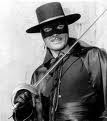Previous posts on this blog have highlighted the gradual erosion of clinical autonomy endured by the medical profession. The rise of guidelines, protocols, trust formularies etc that has taken away the professionalism from doctors and turned them into box ticking technicians.
Since I have been doing some agency work I have seen that this continues to a staggering degree. Micromanagement is rife and rigid control is the norm. I recently worked at a place where the management dictated what needles are used for various mundane and common procedures.
Many of these rules are introduced in the cause of risk management. The needle rules start with the premise that medical professionals can't be trusted with sharp objects!
What they have failed to take into account is a phenomenon first described in the field of motoring. I've been unable to find the reference, but I remember reading a study that showed that, if you increase the safety features within a car, the driver tends to drive less safely. Seatbelts, airbags and the like increase the driver's feeling of confidence and security, and he consequently drives faster, and takes more risks.
In the clinical setting, clinicians who work with sharps that have safety features to reduce the likelihood of needlestick injuries are unlikely to develop the level of care and discipline in their handling of sharps that my generation learned, and in the long run there is no improvement in safety as the one cancels out the other.
As an illustration of the principal I quote Jeremy Clarkson.
"If you want people to drive more safely you have to get rid of seatbelts, airbags and all the other things that make things safer for the driver, and replace them with a six inch spike on the steering wheel pointing towards the driver's chest. Now that would make you drive fucking carefully, wouldn't it!"
I exercised some restraint
1 hour ago



One hates to pop an airbag like Clarkson, but that spike on the steering wheel idea has been around for ages. Back in the 1980s, the A&E consultant Dr No worked for then regularly asked on a rhetorical basis what was best for road safety: a seat belt or a spike on the steering wheel?
ReplyDelete